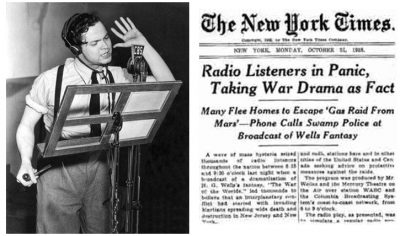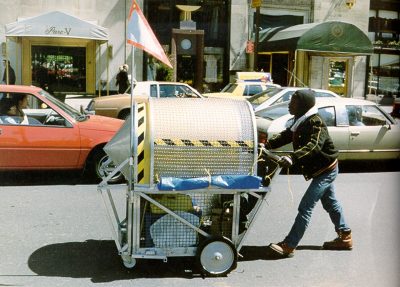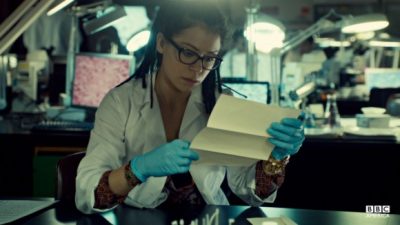When I started this series three weeks ago, my goal was to provide a review/recap of Orphan Black’s final season, tying it to issues of the body, history and philosophy of science, and the value of fiction. Turns out that last element drew me in and I was most curious about the way that Orphan Black’s creators, Graeme Manson and John Fawcett, employed their science consultant, Cosima Herter, in order to make the science in the show as “real” as possible, while still developing and producing a piece of work that was very clearly fiction. Along the way, I’ve found myself wanting to bring in other works of narrative-based fiction. I wrote about Mr. Robot, but I have drafts that include Minority Report, Black Mirror, Nathaniel Rich’s 2013 novel, Odds Against Tomorrow, Margaret Atwood’s Oryx & Crake, The Blair Witch Project, and Orson Welles’s 1938 War of the Worlds radio broadcast. Reflecting back on those drafts, I came just short of plotting these works along a matrix consisting of two axes: plausibility and believability. That is, could this not only actually happen, but would a public believe it had? In effect, I began to work out how hyperstitious to consider each of these culture artifacts. more...
fake-or-fiction
Last week, I introduced some characters to my argument: Orphan Black and its writing and consulting staff, Mr. Robot and its creators, the Cybernetic Culture Research Unit and Nick Land, accelerationism, and hyperstition. Need a refresher? Find it here. Now, I’d like to take a brief detour in order to introduce another important character here: speculative design. more...
At what point does a fictional tale of a present day technocapitalist advancement and the characters embroiled in its aftermath turn into a dystopia? Is there ever a clear threshold between the plausible and the absurd? And what responsibility does the artist or author have towards their audience to make clear the realism of the piece?
Spoiler Warning: you may want to tread lightly if you haven’t yet but still plan on watching through season 2 of Mr. Robot and season 5 of Orphan Black. more...
Last week, I introduced some characters to my argument: Orphan Black and its writing and consulting staff, Mr. Robot and its creators, the Cybernetic Culture Research Unit and Nick Land, accelerationism, and hyperstition. Need a refresher? Find it here. Now, I’d like to take a brief detour in order to introduce another important character here: speculative design. more...
At what point does a fictional tale of a present day technocapitalist advancement and the characters embroiled in its aftermath turn into a dystopia? Is there ever a clear threshold between the plausible and the absurd? And what responsibility does the artist or author have towards their audience to make clear the realism of the piece?
Spoiler Warning: you may want to tread lightly if you haven’t yet but still plan on watching through season 2 of Mr. Robot and season 5 of Orphan Black. more...



